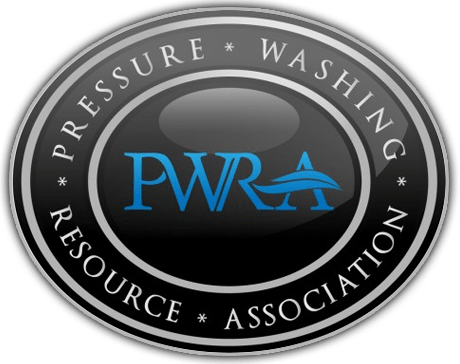Layering Techniques for Cold Weather Window Cleaning in Bloomfield Hills
If you live in an area where cold weather is common, the term “Winter” likely brings a chill to your spine. So if you live in a chilly place, read on to learn more on Cold Weather Window Cleaning! Let’s face it- working in the cold, snowy windy conditions of the northwest, midwest and northeast can be brutal. But in the end, we still have to get the work done. So that raises the question:
How can we beat the freeze?
Being born and raised in northern Michigan, I’ve had lots of time to dwell on this question. I’ve been cleaning windows in the cold months for more than half my life, so I’ve seen it all. From the beginning, I always had a feeling, a deep inner conviction, that if I could just find the right combination of layers and accessories to wear, then I could continue working at peak efficiency in even the nastiest conditions.
So, with that dream in mind, I began to experiment with different clothing options. I continually asked myself: “What do I want in a jacket, pants, socks or underlayers? What will help me move quickly, retain heat, stay dry, keep me from sweating through my Jockey’s, and block the wind? What will give me the best balance of durability, ease of movement and versatility?”
Over the years I’ve come to some conclusions about cold-weather layering systems that have served me well. Below are a few of my hard-earned recommendations.
Base Layers: Synthetic or Natural Fabric?
Base Layers are meant to be worn next to the skin and are your first line of defense against the cold. They serve the dual purpose of retaining heat and pulling moisture away from the skin. There are many choices when it comes to base layers. Whatever you chose, it’s wise to put some thought into this first foundation of your cold-weather suit of armor.
We can break down base layers into two main categories of fabric: synthetic and natural. Let’s take a quick look at both.
Synthetics
The benefits of synthetic materials make them a great choice for work in harsh conditions. Synthetics like polyester, lycra and nylon typically dry faster than natural fabrics. They can be very durable, insulate well even when wet, and are often budget-friendly.
Synthetics also wick moisture very effectively, which is important when working outdoors in cold conditions. Why? Well, nothing wreck your day more than sweating through your winter clothing while working hard, only to freeze when your activity level drops for a moment. Synthetics are excellent for allowing the moisture created by your body during activity to quickly transfer through the fabric to the outer surface, where it can evaporate away.
Synthetics are also a great choice because they are easy to launder and require minimal care.
Natural Fabrics
When it comes to cold weather performance, only one natural fabric can really compete with the best synthetic materials. That fabric is Merino wool. I know, I know. Right now you’re thinking “Wool! NO WAY! It’s itchy and stinks like a horse blanket.” Well, hold onto your horses, yourself, Sir.
Merino is not your granddad’s wool. Merino wool comes from Merino sheep, a breed that’s native to New Zealand and parts of Australia. The wool collected from the Merino has some special properties that make it much better than the wool you are used to.
The individual strands of Merino wool have a smoother, more gentle spiral shape than that of traditional sheep wool. This property makes for a softer, smoother feel when it’s woven. Merino wool is so soft you might mistake it for cotton. That property virtually eliminates the itch factor that wool is known for. It truly is a joy to wear next to the skin.
There are many other benefits to wool that make it a great choice for cold-weather wear. Wool is naturally anti-microbial, so it can be worn for multiple days in a row without retaining odor. Don’t doubt it- there are many times that I’ve worn merino wool shirts, socks and yes, even underwear for three or four days straight with no residual stink (incredibly, my wife will back this up)! Wool also has a great warmth-to-weight ratio, and even insulates when wet.
The chief drawbacks to merino are three-fold: First, it must be laundered with care. Harsh detergents can strip the natural lanolin oil from wool, reducing its antimicrobial properties. It’s usually best to launder merino wool in a gentler detergent than what you probably have in your laundry room right now. Secondly, wool has to be line-dried. It will shrink significantly if tossed in the dryer. Lastly, merino can be quite expensive. A single long-sleeve t-shirt can cost between $50-$90.
Choose the right pieces
Regardless of the fabric you choose, it’s important to select baselayer pieces that will fit your needs and work in a variety of ways.
When it comes to base layers, a mid-weight long sleeve top is a must. I prefer a hooded or quarter zip shirt for the added functionality. When it comes to bottoms, I suggest having two choices in your arsenal. A mid-weight full-length synthetic or wool legging will serve you well on most days, but having a pair of heavier weight fleece bottoms will come in handy on those really cold days.
Mid-Layers: The Unsung Hero
The mid-layer is often overlooked, but can make all the difference when it comes to staying warm. An ideal mid-layer is low on bulk, so it can fit under an outer shell, yet still warm and durable. The mid-layer can also be useable as an outer layer in milder conditions or when the activity level is really cranked up. This layer also needs to have the breathable quality of base layers. We must move that moisture away from the skin! The mid-layer can do that, while providing much-needed insulation at the same time.
Some great choices for mid-layers include fleece and wool. Fleece is a nice choice, because it insulates well and still retains good breathability. It’s readily available anywhere, and it’s very affordable.
Fleece comes in a variety of weights and textures, so it’s easy to choose a layer that fit’s your environment. Keep in mind though, that most fleece pieces are poor wind blockers. It will usually be necessary to couple fleece with a wind blocking outer layer for it to really be effective.
Wool also works beautifully as a mid-layer. It’s hard-wearing, it insulates well, and it’s very breathable. Merino is a great choice, but as mentioned, you’ll pay a premium. However, since the mid-layer isn’t worn next to the skin, many people are comfortable with traditional wool in this application.
Whichever way you go, remember- the mid-layer is key. If chosen properly, this layer can be worn, not just in the winter, but in the shoulder seasons too. It can be a very versatile piece. I recommend a full zip, mid-weight fleece or merino wool jacket as part of an effective layering system. Mid-layer bottoms can often just be the pants you normally wear for work. When paired with a base layer and an outer shell, they will perform fine in protecting your lower half.
The Outer Layer: Keep the Nasty Out!
The final component to our layering system is the outer layer, or shell. There are almost too many options in this category to choose from. Let’s break it down.
Hard Shells
Hard shells are probably what you think of when someone says “parka” or “ski jacket”. They are usually made of a hard-wearing, waterproof and windproof nylon. Hard shells can be a good choice for the cold weather window cleaner, but there may be better options.
Hard shells have some serious drawbacks. They tend to be rather stiff and bulky. The fabrics often don’t breath particularly well. Most hard shells are cut a little long in the torso, which can get in the way of a window cleaner’s tool belt. Hard shells also don’t insulate well, so if you go this route, you’ll have to ask much more of your mid-layer.
There are some exceptions to the above-mentioned drawbacks. Some of the higher-end manufacturers do make great hardshells that breath well, are tailored for movement and have a fit that will work well for a window cleaner. However, these options will tend to be expensive. If you are determined to go with a hardshell, look for those designed specifically for cold-weather backpacking and rock climbing. These pieces will have the characteristics you’ll need to make them an effective choice.
Hard shells are a great choice for bottoms because of their superior durability. Often, a lighter weight un-insulated ski pant will be perfect. A solution like this will provide adequate protection from the elements, while still allowing for ease movement and adequate breathability.
Soft Shells
Soft shells are a great choice for window cleaners. These are stretch-woven synthetic fabrics that perform beautifully in cold weather, high-activity pursuits.
Soft shells are brilliant because they stretch. This stretch makes a huge difference in comfort and ease of movement while working. They also block wind very well, which is key in the winter. Soft shells have a smooth exterior surface that stands up well to abuse, so they are very durable. Soft shells also breathe well. They aren’t bulky, so it’s very easy to work quickly and comfortably in one. An added benefit is that soft shells tend to be tailored with a shorter torso length, meaning they can be worn with minimal interference to your tool belt.
Many soft shells are lined with a layer of fleece, and this serves as a good insulator. It’s amazing how warm you can be with the right combination of base layer, mid layer and soft shell.
Soft shells can be either very affordable or very expensive, depending on the brand and fabric. As a window cleaner, you’ve probably had to remind a potential client that “they get what they pay for”. Well, the same principle applies to soft shells. The pricier versions will be more durable, breathe better, insulate more efficiently and have a better fit.
High-Loft Insulators
High-loft insulators are what you might think of as “puffy coats”. They usually consist of a thin nylon shell stuffed with an insulating material. These insulating layers are great for trapping the wearer’s precious body heat. Other benefits are a low-profile fit and a very lightweight package. Durability can be an issue, though, since high loft jackets tend to use very lightweight materials as the shell component.
Here again we have a choice between synthetics and natural products.
Goose down is the leading natural substance for high-loft insulation. Nothing is quite as effective when it comes to keeping your body heat where you need it- close to your body. Down is renewable, efficient and durable.
There are a couple of drawbacks, though. Goose down can be quite expensive. The quality of goose down is determined by what is referred to as “fill power”. The higher the fill power, the better the down, and the higher the price. On the low end, 500 fill power will provide good economical insulation, but with considerable bulk and weight. On the high end, 850 or 900 fill power will provide amazing insulation at extremely low weights, but with a price tag to match. Another drawback to consider with regard to down is that it does not insulate well when wet, so keeping it dry is a must.
Synthetic insulations have made great strides over the past few years. Although still not quite on par with goose down, synthetics are lighter, more efficient and more affordable than ever. Look for insulations like Polarguard, Coreloft and Excelloft. These synthetic insulations mimic the properties of down by trapping warm air within their fibers and keeping it close to the body. Synthetic insulations have a couple of advantages over down. Firstly, they are considerably cheaper. Secondly, synthetic insulation will usually continue to insulate when wet.
There are lots of choices when it comes to your outer layer. The one I’ve found to be most effective for the active window cleaner is the soft shell. It’s a well-rounded option that performs well in a variety of conditions. It’s designed for movement, and doesn’t interfere with my tools. For me, it’s the perfect choice for winter window cleaning.
Layering Systems: The Cold-Weather Cure
As you can see, the days of rough canvas and granddad’s wool sweater are over. We no longer need show up for work looking like the Michelin man after a Black Friday sale at the Carhartt outlet. There are many options out there for low-bulk comfortable clothing that is functional and comfortable at the same time.
Will you have to spend a little more on your wardrobe to design a killer system? Probably. But before you write it off as an unnecessary expense, take a moment to think about what it might save you in the long run. Being able to work in the cold at maximum efficiency, without the hindrance of bulky clothing or a frozen core is worth the investment. If you want to hire a Cold Weather Window Cleaner, call Lake State Cleaning today!







